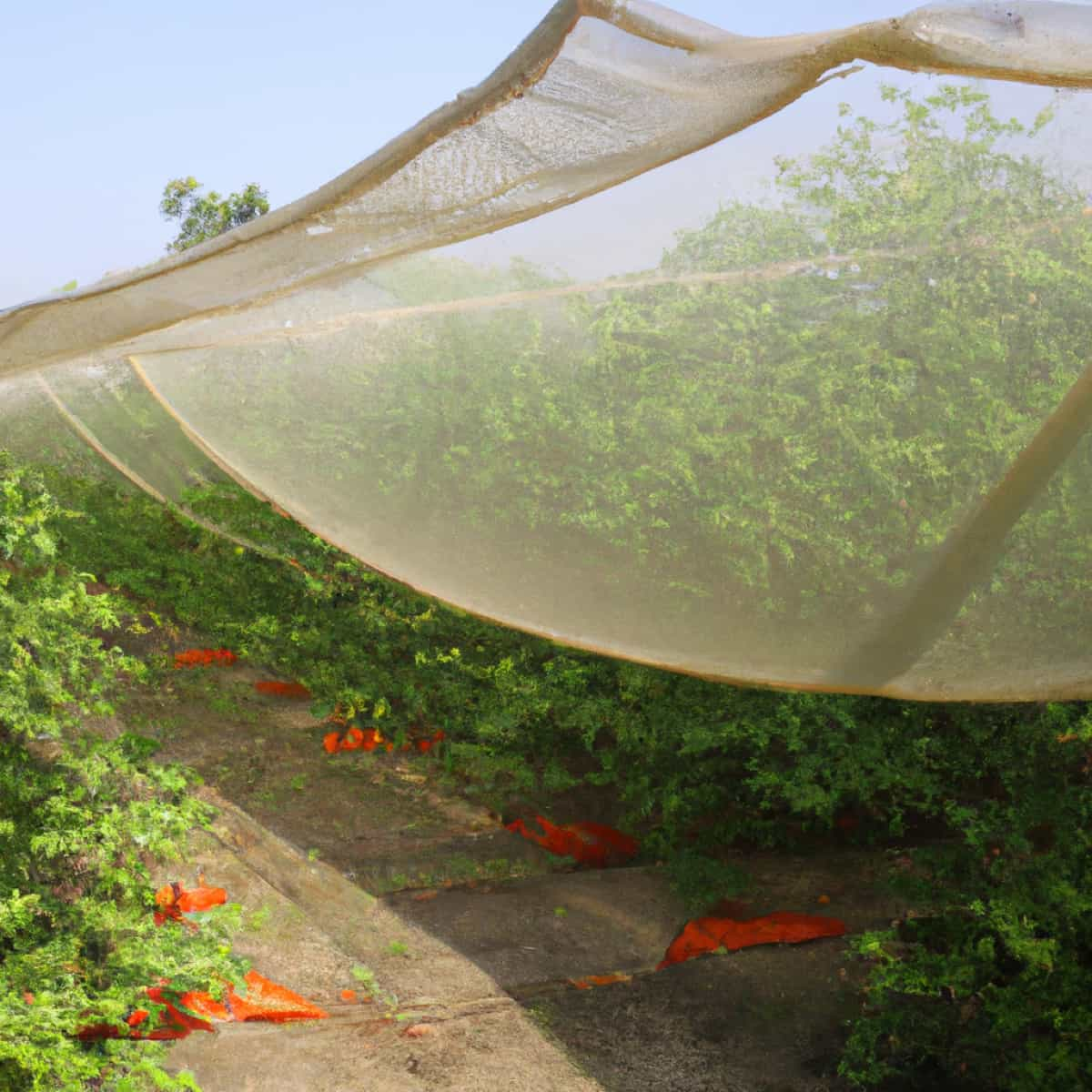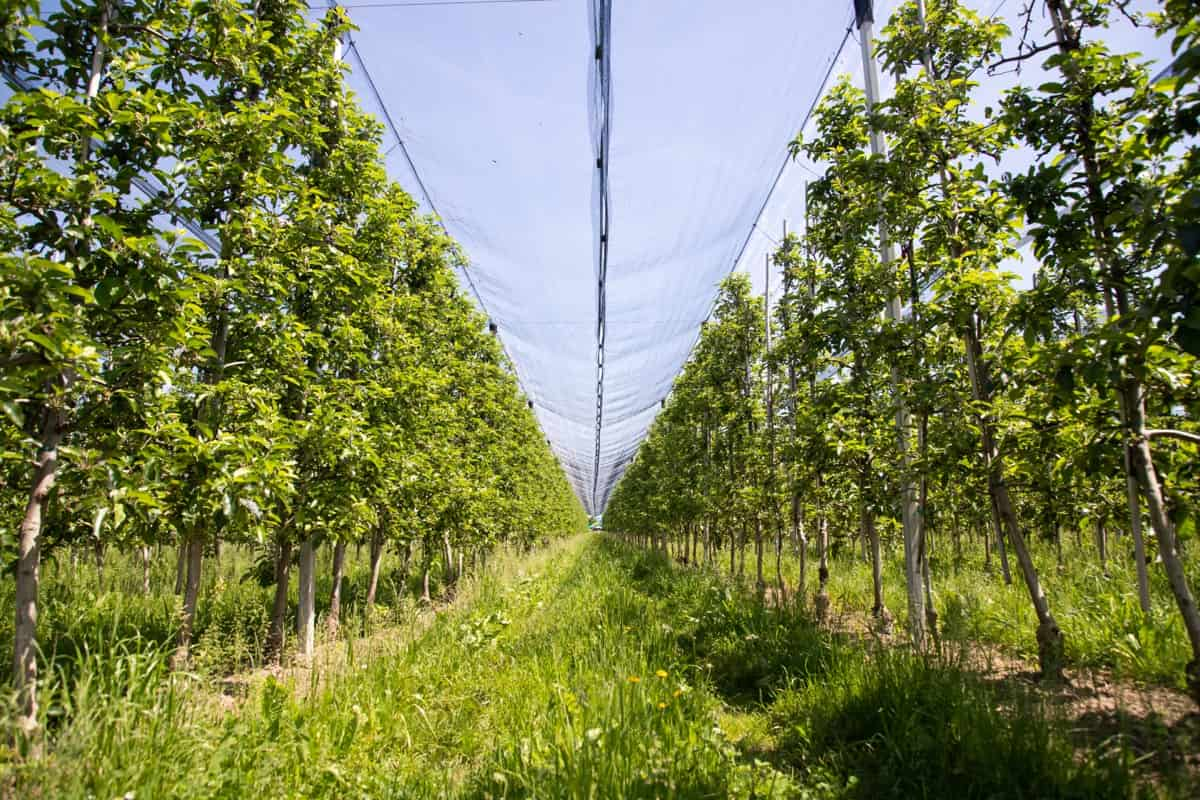Agro shade net is a versatile material widely used in agriculture for various purposes, such as protecting crops from harmful ultraviolet (UV) radiation, reducing wind and rain exposure, and shading crops. Shade nets are made of high-density polyethylene (HDPE) materials and are designed to withstand extreme weather conditions, making them a durable and cost-effective option for agricultural applications.

The agro shade net manufacturing process involves several steps, including raw material preparation, knitting, dyeing, inspection, cutting and finishing, and packing and distribution. This article provides a detailed overview of each of these steps.
Agro Shade Net Manufacturing Process
Raw Material Preparation
The first step in agro shade net’s manufacturing process involves preparing raw materials. The raw material used in making shade nets is high-density polyethylene (HDPE) resin. HDPE resin is a thermoplastic polymer that is lightweight, strong, and resistant to UV radiation and chemical exposure.
The HDPE resin is first processed into pellets and then extruded into sheets. These sheets are then cut into strips of various widths and lengths, depending on the size of the shade net required. The strips are then wound into bobbins used in the knitting process.
Knitting
The next step in the manufacturing process of agro shade net is knitting. Knitting involves using a knitting machine, which interlocks the strips of HDPE material to form a net. The machine has a series of needles that move up and down, creating loops of HDPE material. The loops are then locked together to form a strong and durable net.
The knitting machine can produce different shade nets depending on the needle size and the loops’ pattern. The most common types of shade nets include mono-filament and tape-filament nets. Mono-filament nets are made of single-strand yarn, while tape-filament nets are made of multiple strands of tape.
Dyeing
Once the shade net is knitted, it is dyed in a machine. The dyeing process involves immersing the net in a dye bath containing the dye solution. The net is then agitated to ensure that the dye is evenly distributed. The dyeing machine can produce shade nets in different colors, depending on the dye used. The most common colors for shade nets are black, green, and white. Black shade nets reduce the amount of sunlight that reaches crops, while green shade nets are used for aesthetic purposes and to blend in with the surrounding environment. White shade nets are used to reflect sunlight and reduce heat buildup.
Inspection
Once the shade net is dyed, it is inspected to meet the required quality standards. The inspection process involves checking the net for any defects, such as holes or tears, and ensuring it is the right size and color. Any defects are marked and repaired before the net moves to the next stage of the manufacturing process.
In case you missed it: Equipment Needed for Dairy Farming: A Basic Guide for Beginners

The shade net is also tested for its tensile strength, elongation, and tear resistance. These tests ensure that the shade net is durable and can withstand extreme weather conditions. The results of the tests are recorded and used to maintain the quality control of the shade net production.
Cutting and Finishing
The next step in the manufacturing process of agro shade net is cutting and finishing. The shade net is cut to the required size and shape using a cutting machine. The edges of the net are then finished to ensure they are smooth and will not fray. This is done using a heat-sealing machine, which uses heat to melt the edges of the net, sealing them and preventing fraying.
The finishing process also involves attaching grommets to the corners and edges of the shade net. Grommets are small metal rings that secure the shade net to a frame or structure. The grommets are attached using a grommet machine, which punches a hole in the shade net and inserts the grommet.
Packing and Distribution
The final step in the manufacturing process of agro shade net is packing and distribution. The shade net is packed into rolls and then wrapped in plastic to protect it during transportation. The rolls are then loaded onto trucks and transported to distributors, who sell the shade net to farmers and other agricultural producers. The shade net is typically sold in rolls of various sizes, ranging from 1 meter to 6 meters in width and 50 to 100 meters in length. The shade net required depends on the size of the agricultural field and the specific needs of the crops being grown.
Machinery
Raschel Machines
Raschel machines are a type of warp knitting machine commonly used to produce shade nets. These machines use guide bars to control the movement of the yarn, which is fed through the machine using warp beams. The guide bars control the stitch formation and create patterns, including diamond, hexagonal, and square patterns. Depending on the customer’s needs, Raschel machines can produce shade nets in various widths and densities.
The machines can also produce shade nets with varying UV resistance and fire retardancy degrees. Small-scale raschel machines, typically used for home-based or small businesses, can cost between $2,000 and $10,000. Medium-sized machines suitable for mid-sized businesses can cost between $10,000 and $100,000. Large-scale raschel machines used in industrial production can cost over $100,000.
Circular Machines
Circular machines, also known as weft knitting machines, are another type of knitting machine used to produce shade nets. These machines use a single needle bed to knit the yarn in a circular motion, creating a continuous tube of knitted fabric. Circular machines can produce shade nets in a range of diameters and densities, and the machines can be programmed to create various patterns.
In case you missed it: Hydroponic Amaranthus Farming in a Greenhouse: Key Rules to Start from Scratch

The machines can also produce shade nets with varying UV resistance and fire retardancy degrees. Small-scale circular knitting machines, typically used for home-based or small businesses, can cost between $1,500 and $10,000. Medium-sized machines suitable for mid-sized businesses can cost between $10,000 and $50,000. Large-scale circular knitting machines used in industrial production can cost over $50,000.
Conclusion
The agro shade net manufacturing process is a complex and multi-step process that involves preparing raw materials, knitting, dyeing, inspection, cutting and finishing, and packing and distribution. Agro shade net provides several benefits to farmers and other agricultural producers, including reducing UV radiation, reducing wind and rain exposure, reducing heat buildup, pest control, and aesthetic purposes. These benefits make agro shade net essential for agricultural applications, ensuring healthy crop growth and increasing productivity.
- Feed Your Flock for Less: Top 10 Tips to Save on Chicken Feed
- Ultimate Guide to Ossabaw Island Hog: Breeding, Raising, Diet, and Care
- Hatching Answers: The Top 10 Reasons Your Chickens Aren’t Laying Eggs
- Eggs and Economics: Breaking Down the Cost of Raising Backyard Chickens
- Defend Your Greens: Proven Methods to Keep Iguanas Out of Your Garden
- Ultimate Guide to Cinnamon Queen Chicken: A Comprehensive Guide for Beginners
- Ultimate Guide to California Tan Chicken: Breeding, Raising, Diet, Egg-Production and Care
- Ultimate Guide to Marsh Daisy Chicken: Breeding, Raising, Diet, and Care
- 10 Types of Chicken Farming Businesses You Can Start for Profits
Hi, I am interested in shade net production, Poly house sheet production and coco pit and coco fiber production units.